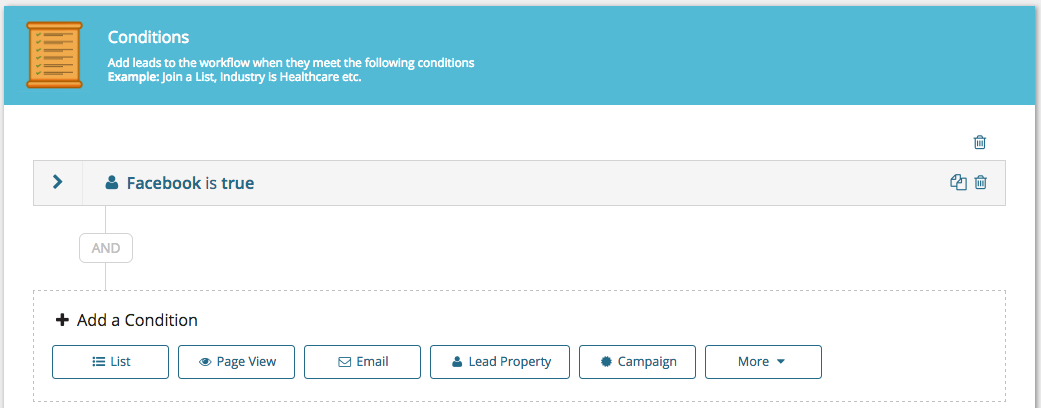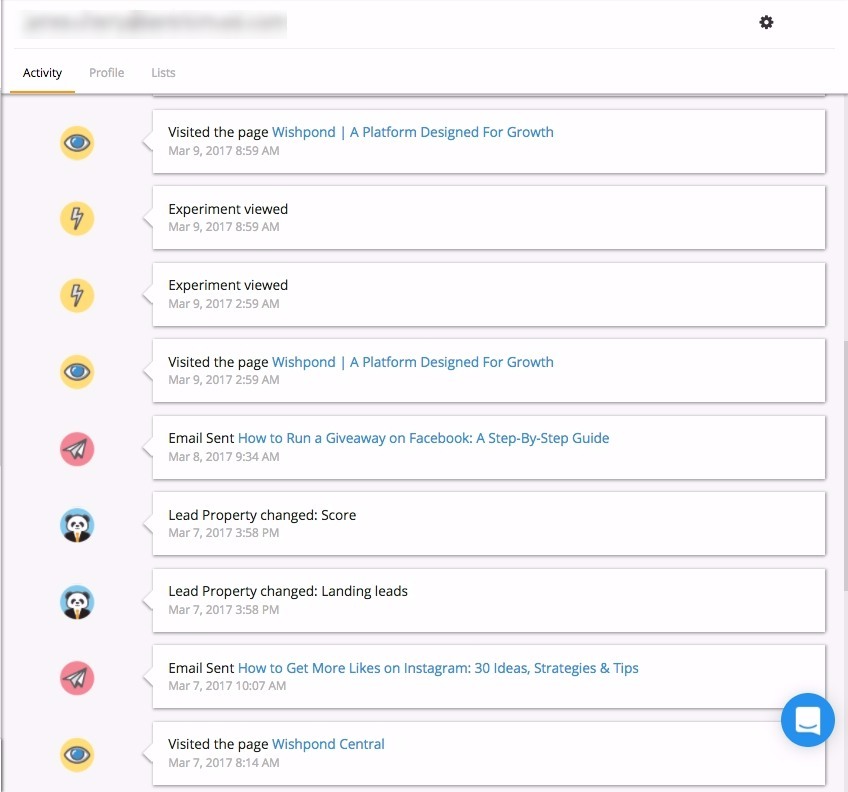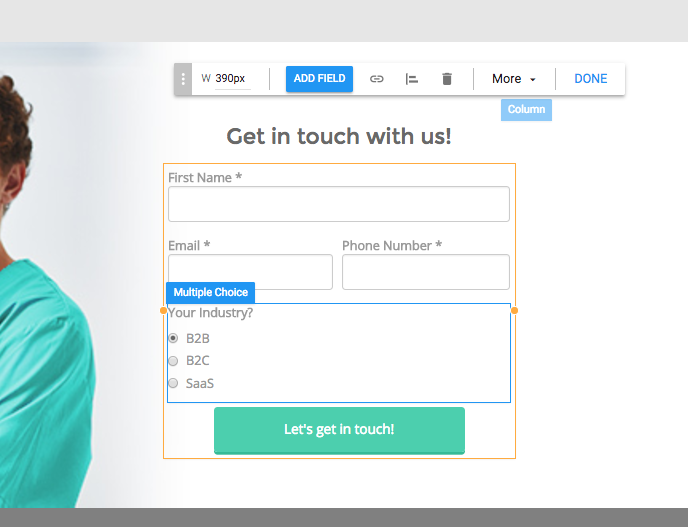In sales, we talk so much about our potential customers as leads that it’s easy to forget that every lead is a real person.
Real people have different characteristics, motivations, ideas, and backgrounds that inform the way they behave. And, for businesses like yours, the best way to learn more about how those qualities affect the buying process is through lead scoring.
The questions and metrics you want to look for in lead scoring are the ones that will weigh heaviest on whether a lead becomes a buyer — similar to what you might ask during a sales consultation:
- How did they find your company?
- What aspects of your product or service interest them?
- What role do they serve at their current company?
Learning and recording these factors will help you understand what type of lead is most likely to convert and how to adjust your campaigns accordingly.
Of course, to do any lead scoring, you’ll need to have the right technology in place first. Most of the time, that means you’ll need a marketing automation platform integrated with your CRM database. This integration will help you track leads through every step of the purchase process and pass the qualified ones to sales much faster.
Here are the top five metrics to include in your lead scoring…
1. Source
Monitor the starting points that bring leads into your funnel. What did they click on or search or open to get your offer? Were they on a desktop computer or mobile phone? Understanding the beginning of your lead’s journey will help you identify where they are headed.
Here’s an example of a workflow which adds .5 to a lead’s score if they have lead property “Facebook” (assigned to anyone visiting your website from a URL containing utm_source=facebook):


Certain lead channels may tend to produce leads that are further down the funnel or more serious about the buying process, so you may want to assign more points for those channels. For example, a lead who clicked through from a social media post and subscribed to your blog newsletter is probably much less qualified than a lead who came in through a relevant search term and downloaded a pricing guide. Hence, leads with a search source tag should get more points. Lead source can also help the sales team start better initial conversations with leads by providing context information about their research process.
2. Behavior
One of the best ways to predict and optimize future site behavior is by monitoring past site behavior. Study what paths leads take to become customers and assign points to actions, relative to how likely that action is to get to a sale.
You should have point values designated for every possible action a buyer might take on your site. Examples might include:
- Viewing a product page
- Reading blog articles
- Subscribing to a newsletter
- Downloading a guide or whitepaper (and some of these should be weighted heavier depending on the level of interest/intent they signal)
- Opening or clicking through a nurture email
- Requesting a price quote
- Requesting a demo
- Asking questions via chat
- Visiting careers page (this should actually deduct points from a lead score, since it indicates the person is job hunting and not a buyer)
Here’s an example of lead activity in the Wishpond lead database:

As the values from each of these actions add up in your marketing automation platform, you’ll be able to see which leads have spent a lot of time researching your product or service, or at least engaging with your brand.
3. Firmographics
Some of the most basic ways to group your customers are by firmographics such as job title, company size, and geographic region. While people who share one of these characteristics differ in many ways, demographic qualities do provide general ideas for messaging direction. They can also help you weed out leads who aren’t likely to convert.

For example, if your product is used mostly by IT managers at large enterprises, you may not want to spend too much time catering to sales professionals at small startups. Just be careful here; you don’t want the sales team to neglect leads just because they aren’t an exact-match with your ideal customer profile. In other words, don’t drop the firmographics score to zero just because someone comes from the “wrong” industry.
Another good idea for firmographics scoring is to use a second scoring dimension to help sales reps distinguish between qualification and engagement. E.g. the first digit of the lead score indicates firmographics match, while the later digits indicate buying intent, from zero to 100. Your abilities here will vary depend on the marketing platform you use.
4. Engagement
Separate from action — which tracks where a lead clicks and in what order — engagement measures how much time a lead spends with your site and marketing materials. Leads who engage for a lengthy amount of time with your emails or blog content are likely to be more invested and more likely to convert.
You’ll want to group engagement into specific segments and set a maximum achievable number to prevent leads from having outrageous scores if (for instance) someone leaves their browser open during lunch break. Nevertheless, there’s a big difference between someone who clicks an email link and quickly backs out of the resulting landing page than someone who spends 10 minutes reading.
5. Product-Specific Factors
Depending on what you’re selling, there are likely some factors that will immediately distinguish casual browsers from serious buyers. For example, users of your product may need to work in a certain region, have a big enough project budget, or use a particular business system that your product integrates with (sometimes referred to as “technographics”). You can use these metrics specific to your product to weed out unqualified leads on whom you shouldn’t waste any time.
Since most of this data is fairly custom, you’ll need to add a question to your capture forms to collect it. Just make sure this form value is easy to categorize (e.g. a drop-down menu) and linked to the appropriate scoring metric in your marketing platform.
Conclusion
Your prospects are all individuals, worthy of at least a first impression. But when it comes to your product, not all prospects are equal. Lead scoring isn’t easy, but it’s an excellent way to prioritize your marketing and sales interactions by focusing on people who have the highest likelihood of converting and optimizing your messaging to bring the rest further along.
Related Reading
- 24 Amazing Facebook Giveaway Examples
- Facebook Landing Pages: 38 Ideas, Tips and Examples
- 5 Facebook Landing Page Template Examples Critiqued
- The 2017 Guide to Instagram Contest Rules
- Social Media Marketing Plan: An 11-Step Template
- 10 Terrific Instagram Tools for Business
- 25 Awesome Ideas for Giveaways on Facebook
- 25 Sure-Fire Facebook Contest Ideas
- 30 Amazing Examples of Branded Facebook Contests Done Right
Wishpond’s Facebook Contest Apps make it easy to create sweepstakes, photo contests, Instagram hashtag contests & more.

Karri Bishop is a marketing communications specialist at TechnologyAdvice, a B2B marketing firm that connects buyers and sellers of business technology. Karri manages social media strategy and covers various topics in the industry.

